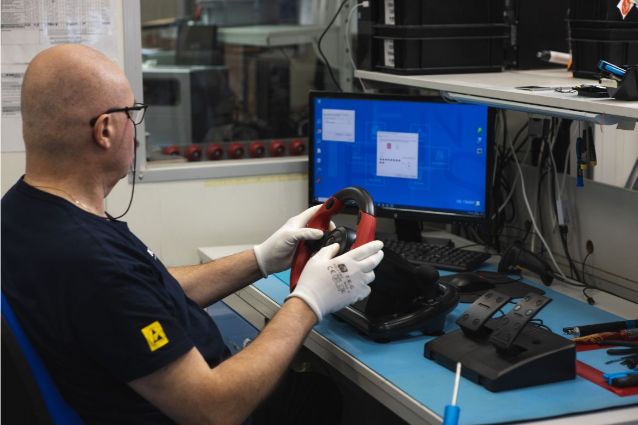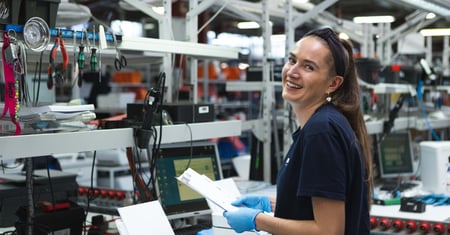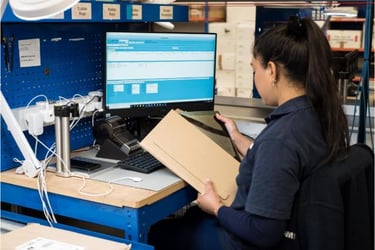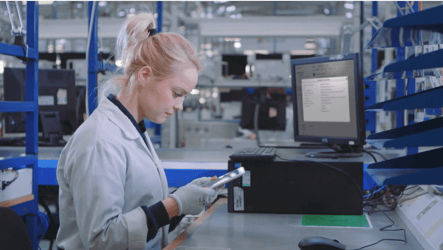Are you looking for ways to optimize your reverse logistics supply chain and boost your value recovery? You can improve by tightening up and streamlining certain parts of the process. Failing to optimize your reverse logistics can lead to a loss of money, poor customer satisfaction, and decreased brand loyalty.
Ingram Micro Lifecycle has supported multiple industries with reverse logistics services for over a decade. We work with companies globally to streamline their processes through rapid and efficient off-site returns management.
In our latest article below, we highlight and explore nine key areas within reverse logistics that you should focus on that will directly impact your returns management value recovery.
9 factors affecting the cost of reverse logistics
Analysis of these key areas below will highlight where changes will positively influence the effectiveness of your reverse logistics program, and more importantly, the value you recover from products.
1. Volume
The amount of returns you have coming back from customers or end users has a direct impact. The more returns you have, the more you pay for recovery and processing.
This means that the higher the volume you process, the larger the supply you have for secondary resale, but you need to make a return on your investment.
You must ensure you have the processing capacity for whatever volume of returns you get as rapidly as possible. Fighting against depreciation is essential to value recovery. You also need access to secondary market networks to move these on.
Having the physical capacity to process high volumes can be an issue itself. This is the case with large products, such as SDAs (Small Domestic Appliances). Failing to have the space to store your returns can lead to a backlog, affecting the rate of processing and depreciation. You may need to invest in larger premises to handle the storage and processing.
2. Condition of returns
While out of your control to a degree, as the end user will be the last point of contact on a product before it’s returned to you, you can control the returns packaging. Ensure your instructions and requirements for returns packaging are clear enough so no additional product damage occurs while in transit back to you.
Poor quality returns that are damaged and faulty will require a higher rate of repair and refurbishment. This means increased costs to get returns to a resaleable point.
Nearly-new returns often only need new packaging, so the investment is lower.
3. Return on investment
This is a phrase we’ve mentioned a few times already and maybe goes without saying, but it's worth pointing out. Stay on top of the attribution of costs to resales, refurbishing, and logistics. What’s the margin? Is this agreeable?
Regularly reviewing costs can help you see where you need to tighten purse strings or seek alternatives.
4. Financial value
Supply and demand will influence the true product value and determine potential value recovery. If the secondary market is flooded with a particular product, then you may find the average sales price is relatively low. But if there’s a high demand and short supply, then you may see an inflation of the resale cost.
For example, when a brand-new model of smartphone is released onto the market, the secondary market price for the previous model often plummets as the market will see an increase of that older model as people upgrade. The price of the previous model may have been experiencing higher resale figures because it was, at that time, the newest model.
A returned, second-hand product will be affected by depreciation. A product with an originally higher price point will typically hold value for longer compared to one with a lower originating price point.
5. Errors
We’re only human after all and mistakes do happen. Clunky or inconsistent processes will increase the likelihood of problems.
Where there are parts of your reverse logistics process that you haven’t automated or simplified, you may see a lack of efficiency. Innovating and being agile with system-driven processes ensures as fast a turnaround as possible whilst minimizing human subjectivity.
This gets the product through the process ahead of resale and maximizes potential value recovery.
Conversely, if you’ve heavily automated your processes, consider what happens if your equipment goes wrong. What’s the financial cost to repair? How much would downtime cost you?
Mistakes and production issues in the original supply of the product will also impact the overall costs as there will be costs involved in rectifying this further up the chain.
6. Repair and refurbishment services
Innovating in techniques and technology will broaden your opportunities for restoring quality to the product whilst remaining cost-effective.
The more all-encompassing and innovative your repair and refurbishment processes are, the higher value you can recover on the secondary market as the quality of product you put out will be higher.
7. Speed
Depreciation is hugely affected by speed. Given how quickly technology advances, high-tech products in particular drop in value the longer you have them sitting on your books. The quicker these are turned around, the higher the value you can recover.
Streamlining by removing any unnecessary or repetitive steps will shorten the time it takes to get the product to the end of the returns process.
Seeking partners that can offer complete end-to-end processes avoids multiple parties interacting with the product and potentially elongating the process. There can also be procedural discussions with the OEM (Original Equipment Manufacturer) in the case of warranty claims. Using multiple partners also chips away at your ROI.
8. Footprint
Being present in the locations your customers are in enables easier support when they need it, be it across the UK, Europe, or even globally. This may require investment in third-party partners to enable localized support, but it will improve your customer experience and their satisfaction.
It also means that the recovery process is quicker as shipment and logistics times are shorter for reaching local returns centers. Transportation can make up 60% of total reverse logistics costs.
Having a single partner offering centers where you need them enables standardized processes across all locations, as opposed to different approaches from different partners, which means a seamless recovery. This then influences the rate of depreciation and also reduces the margins of errors. For example, when associated with failed deliveries.
9. Access to secondary markets
If you don’t have a network to resell your returned products through, then this could create a backlog of returns. The longer they sit with you, they’ll higher the rate of depreciation.
You need an outlet for turning around your products to enable value recovery in the first place. If you have no way of reaching the secondary market then you risk your products heading straight to landfill and becoming e-waste.
In 2022, 44% of consumers believed their returns were resold, whereas 17% believed the items would go to waste.
Finding a recommerce partner with the experience and knowledge of the constantly fluctuating auction prices can be critical. Failing to be equipped when approaching auctions may result in failing to get the best prices. For example, if you were to mix devices within a batch. A low sales price may mean you lose money on higher-valued items within the batch.
A recommerce partner would be better positioned to get a higher price due to their access to better resale channels. They also can cost-effectively re-kit products to make them more attractive to buyers.
Improve your returns value recovery
These nine key factors outlined above can harm your potential for value recovery if not managed efficiently. Improving your repair and refurbishment processes in a cost-effective means influences the volume of products you can put out to the secondary market and the cost you can recover.
Ingram Micro Lifecycle provides a range of returns management solutions. Our repair and refurbishment solutions extend the lifecycle of technology and enable a circular economy. We remove strains and pressure so customers can focus on their core business competencies.
Get in touch if you need an extra expert helping hand to manage your returns and improve your reverse logistics practices.
Recommended additional reading:
- How to optimize technology reverse logistics
- How quickly do smartphone returns depreciate? 5 key factors
- 8 ways a tech reverse logistics partner enables a circular economy
- 8 pitfalls of consumer-facing trade-in programs and how to avoid them
- Successful technology returns program: checklist for network operators
- 8 ways 3PL transforms reverse logistics for a circular economy













